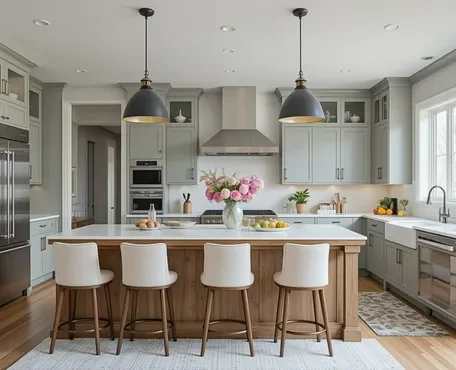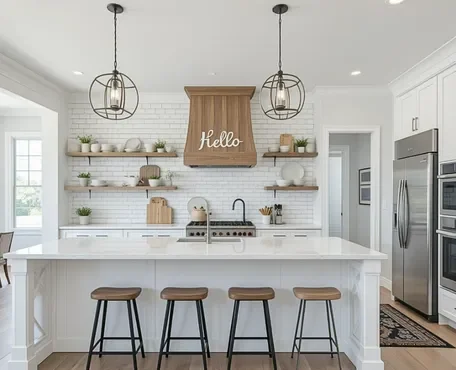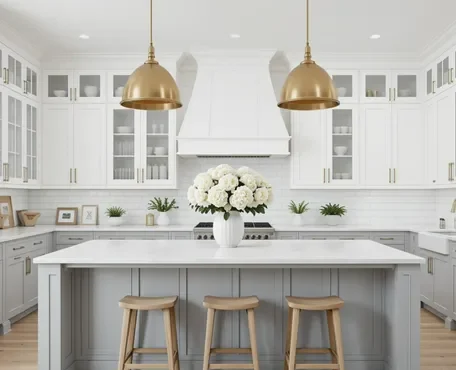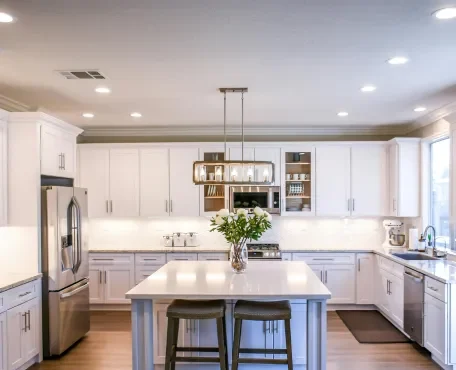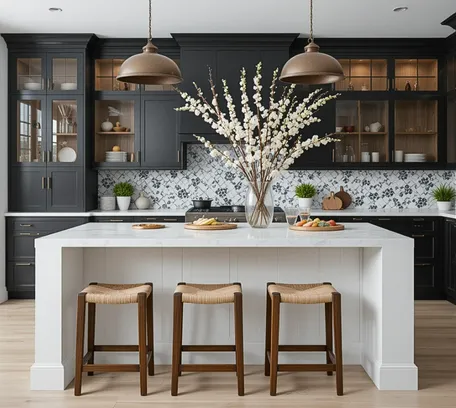
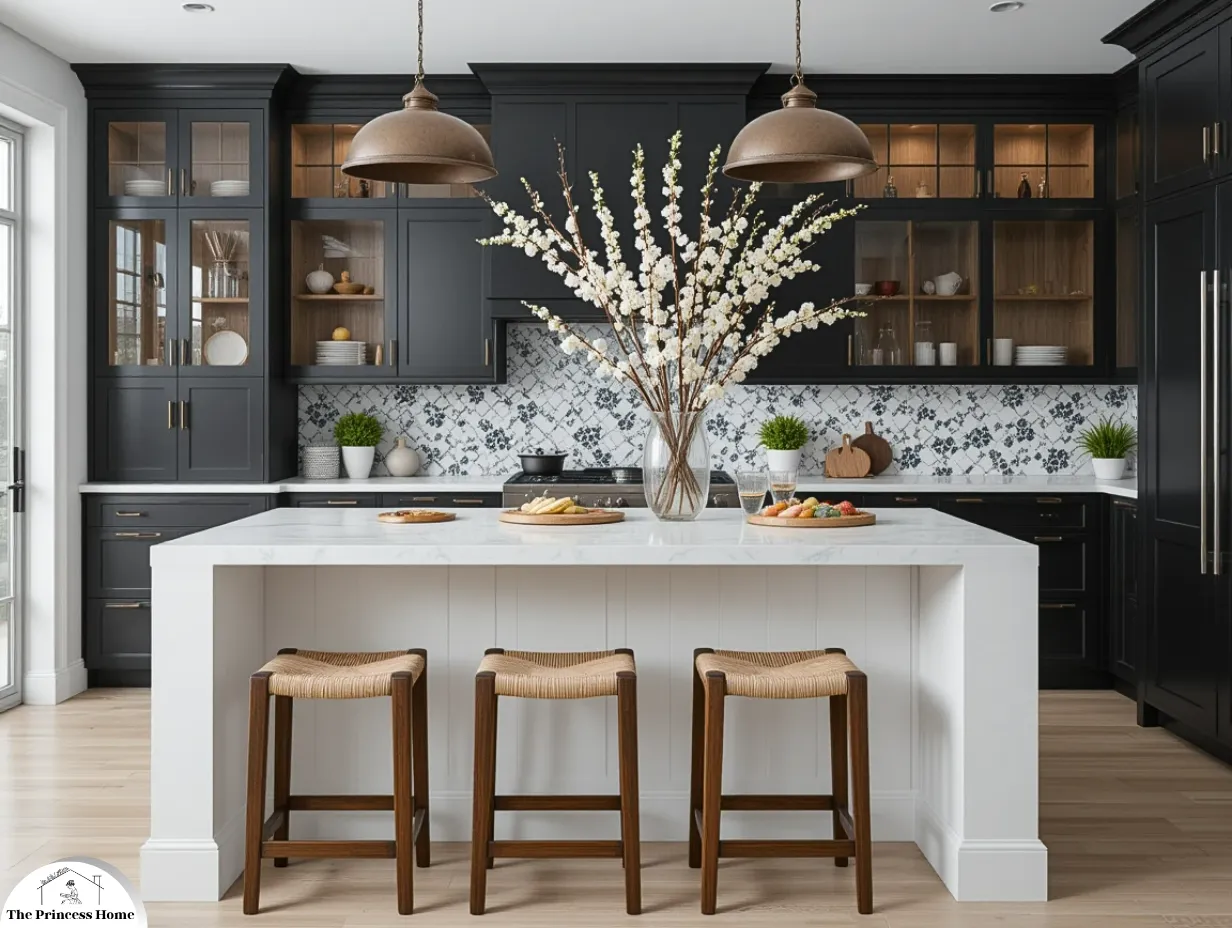
Kitchen Design: Beautiful and Functional Tips for Every Style
Designing a beautiful and functional kitchen doesn’t have to be intimidating or expensive. Whether you love a rustic farmhouse look, modern minimalism, or classic traditional charm, the right design tips can help you create a space that’s both stylish and practical. Below are simple and easy kitchen design tips that work for every style — helping you refresh, remodel, or build your dream kitchen with confidence.
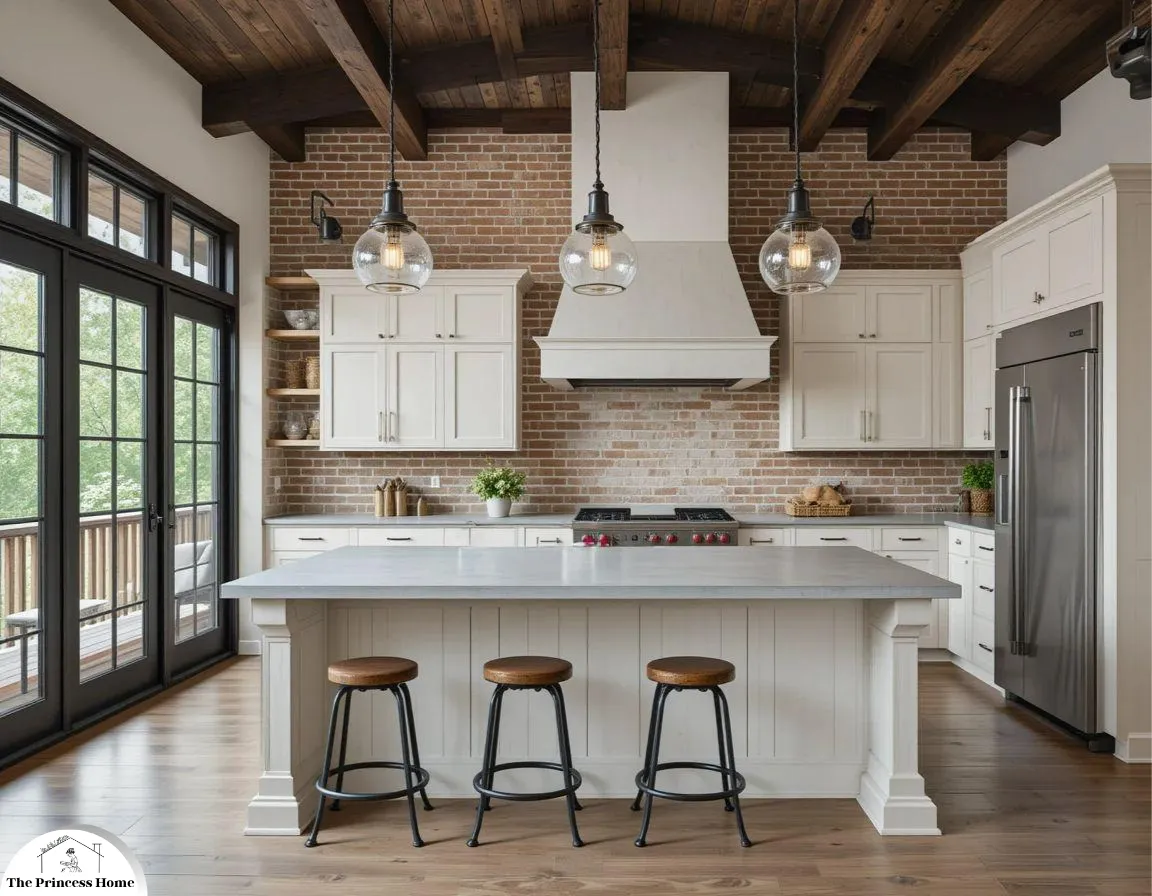
1. Start with a Clear Layout
A practical kitchen layout is essential for efficiency and style. Prioritize the classic kitchen work triangle — the sink, stove, and refrigerator — and adapt it to your space, whether it’s L-shaped, U-shaped, galley, or open-concept. Create smart task zones for prepping, cooking, cleaning, and storage. Ensure smooth traffic flow, plenty of counter space near appliances, and safe, ergonomic placement for everyday use. Add flexible features like an island or breakfast bar to enhance functionality for multiple cooks and entertaining. A clear layout makes any kitchen more functional, comfortable, and easy to use.
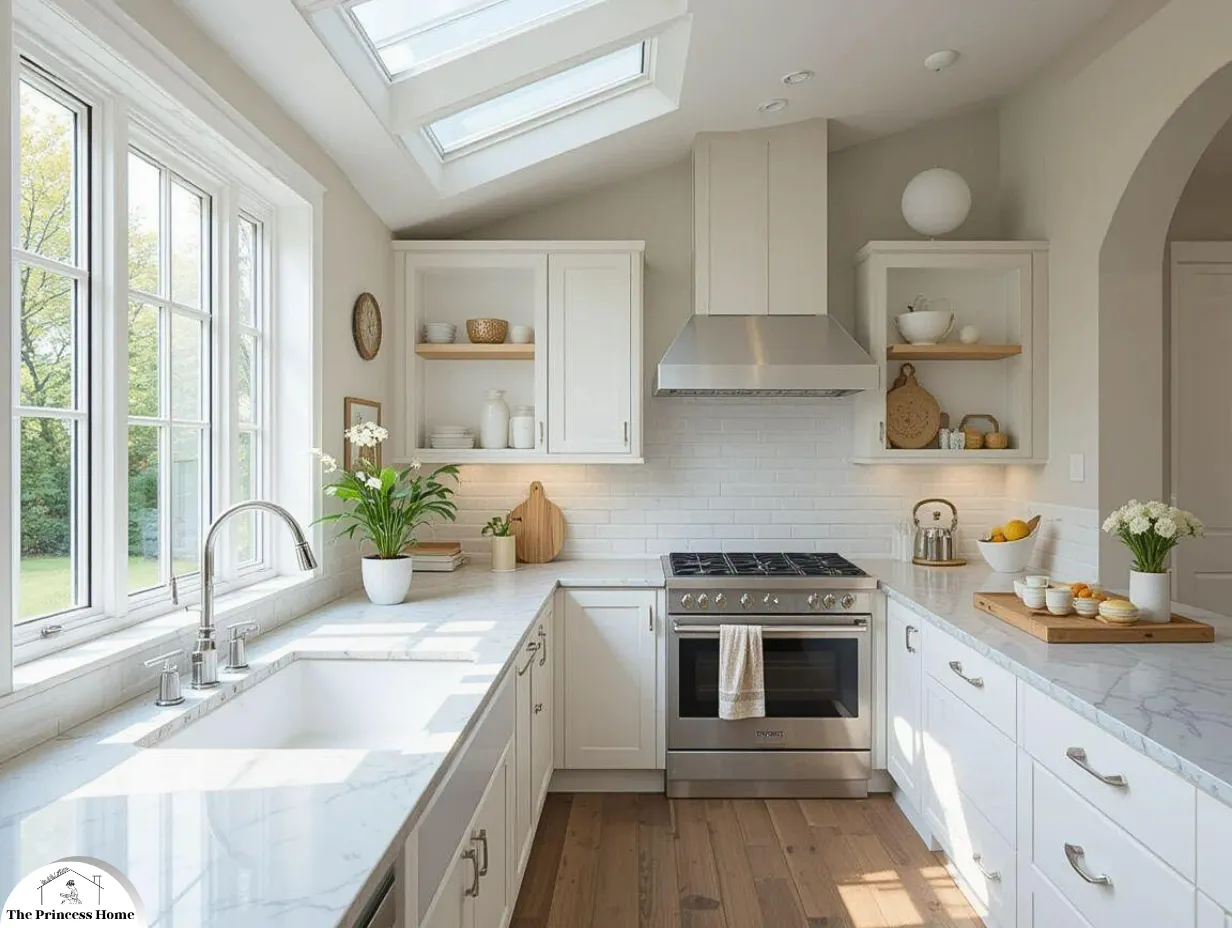
2. Maximize Natural Light
Natural light makes any kitchen feel larger, brighter, and more inviting. Position sinks and prep areas near windows, add skylights or sun tunnels for overhead light, and use glass doors to boost daylight and connect indoor and outdoor spaces. Choose light-colored, reflective finishes to bounce light deeper into the room and keep window treatments minimal to let sunshine in. Adding mirrors can help reflect light in darker kitchens. Combining natural light with good artificial lighting ensures a bright, energy-efficient, and welcoming kitchen all day.
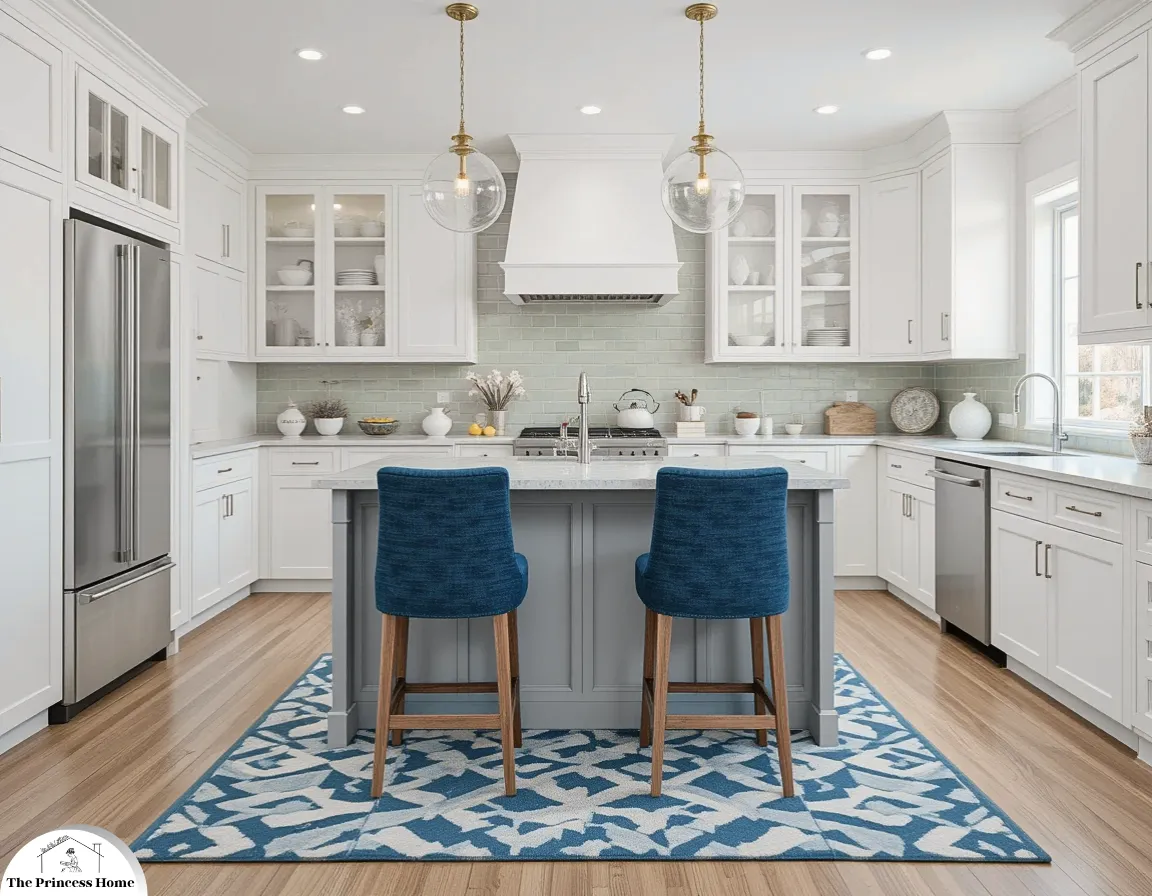
3. Choose a Timeless Color Palette
For a kitchen that stays stylish for years, use neutral base colors like white, soft gray, cream, or earthy tones to create a classic, versatile backdrop. Add pops of color through accessories, backsplashes, bar stools, or decor that can be easily updated. Balance light and dark shades for contrast, and choose timeless finishes for cabinets and countertops. Keep large surfaces neutral and refresh the look with simple accent changes as trends evolve.
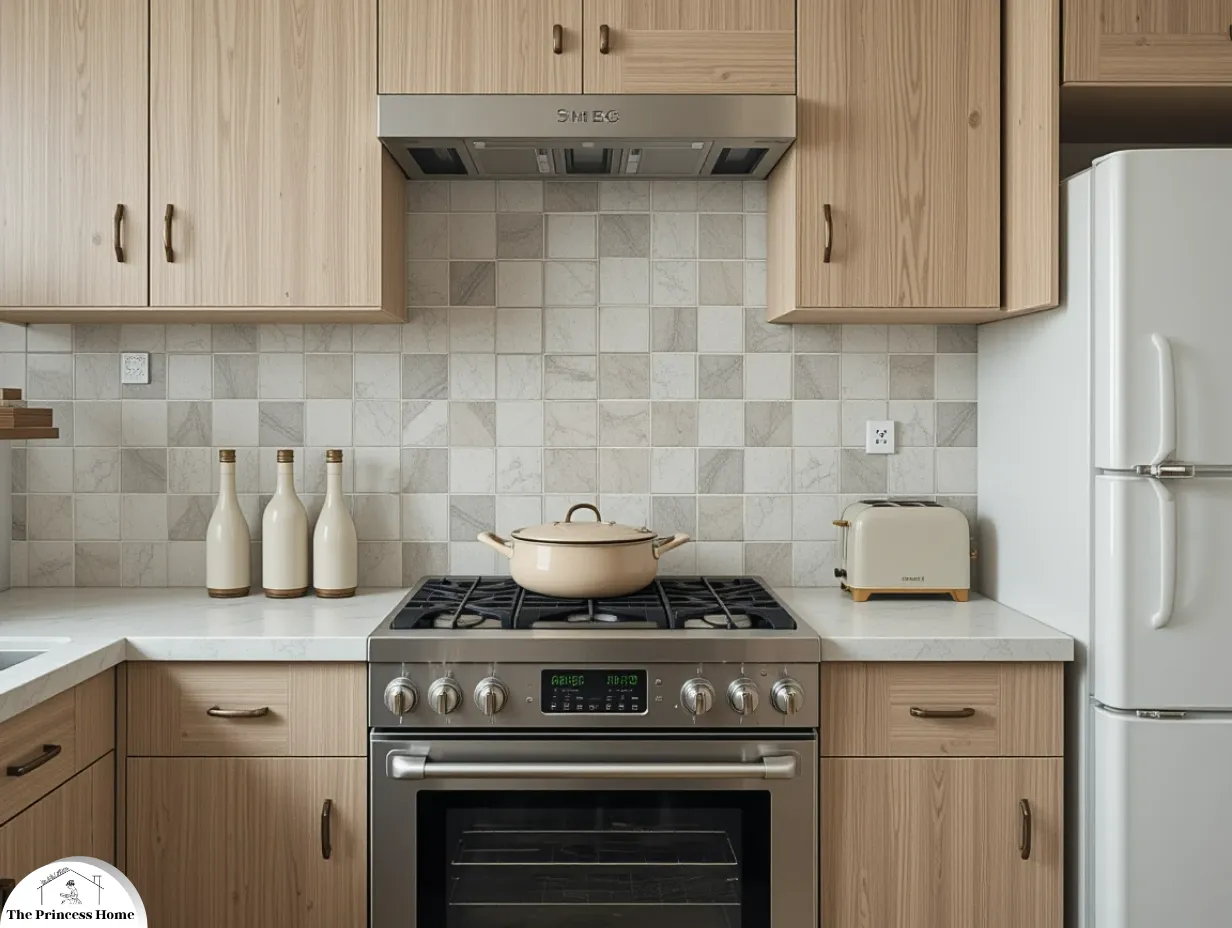
4. Upgrade Your Backsplash
A backsplash is a small design element that makes a big impact on your kitchen’s style. Classic subway tiles are timeless, while patterned tiles, metallic finishes, or natural stone add unique personality. Choose easy-to-clean, durable materials and consider extending the backsplash for a bold focal point. A backsplash is simple to update, making it an affordable way to refresh your kitchen’s look as trends change.
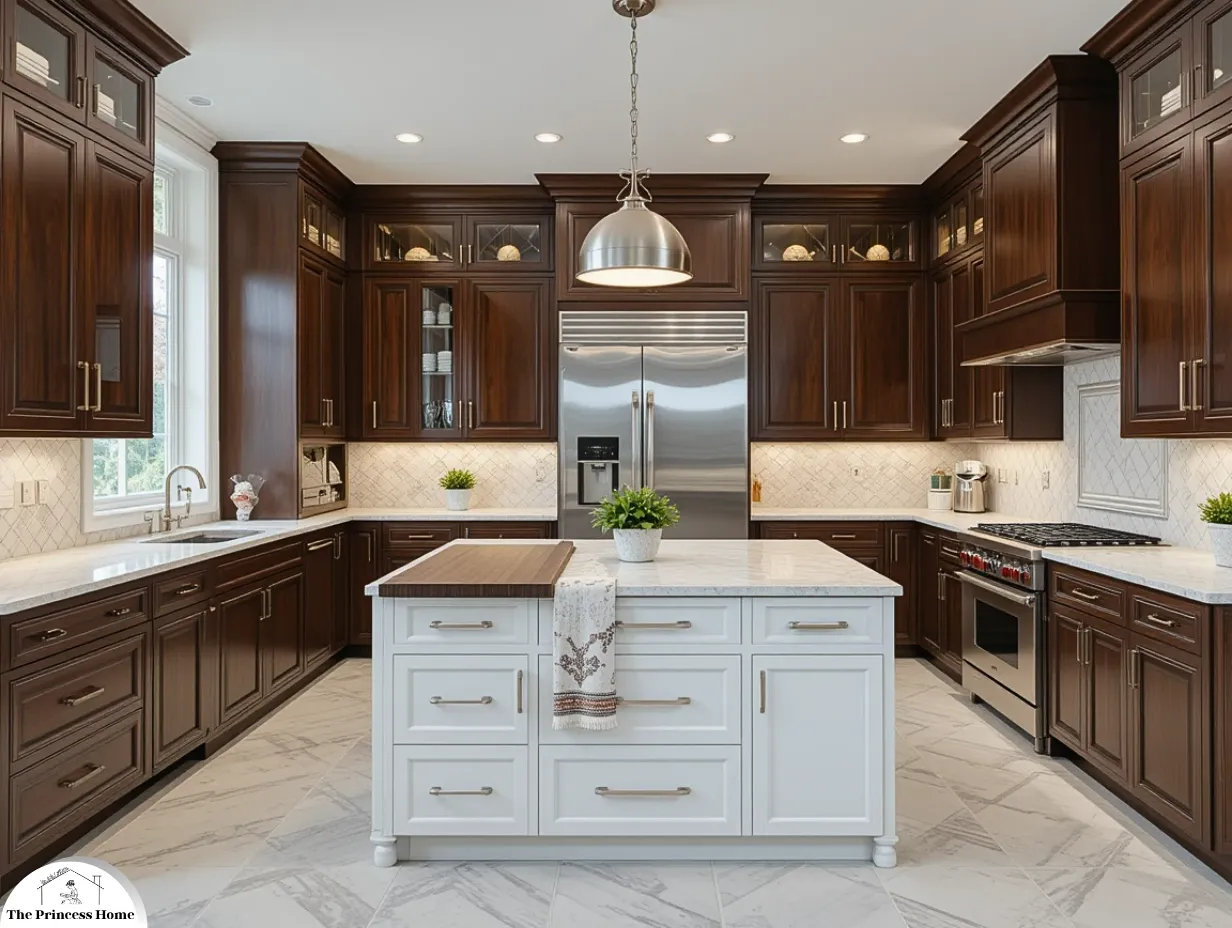
5. Add Functional Island Space
A kitchen island adds valuable prep space, casual dining, and extra storage. Include seating with bar stools, build in cabinets or shelves, and add power outlets, a sink, or appliances for maximum functionality. Design your island with enough clearance for smooth traffic flow and choose materials that make it a stylish focal point. A well-planned island makes any kitchen more practical and inviting.
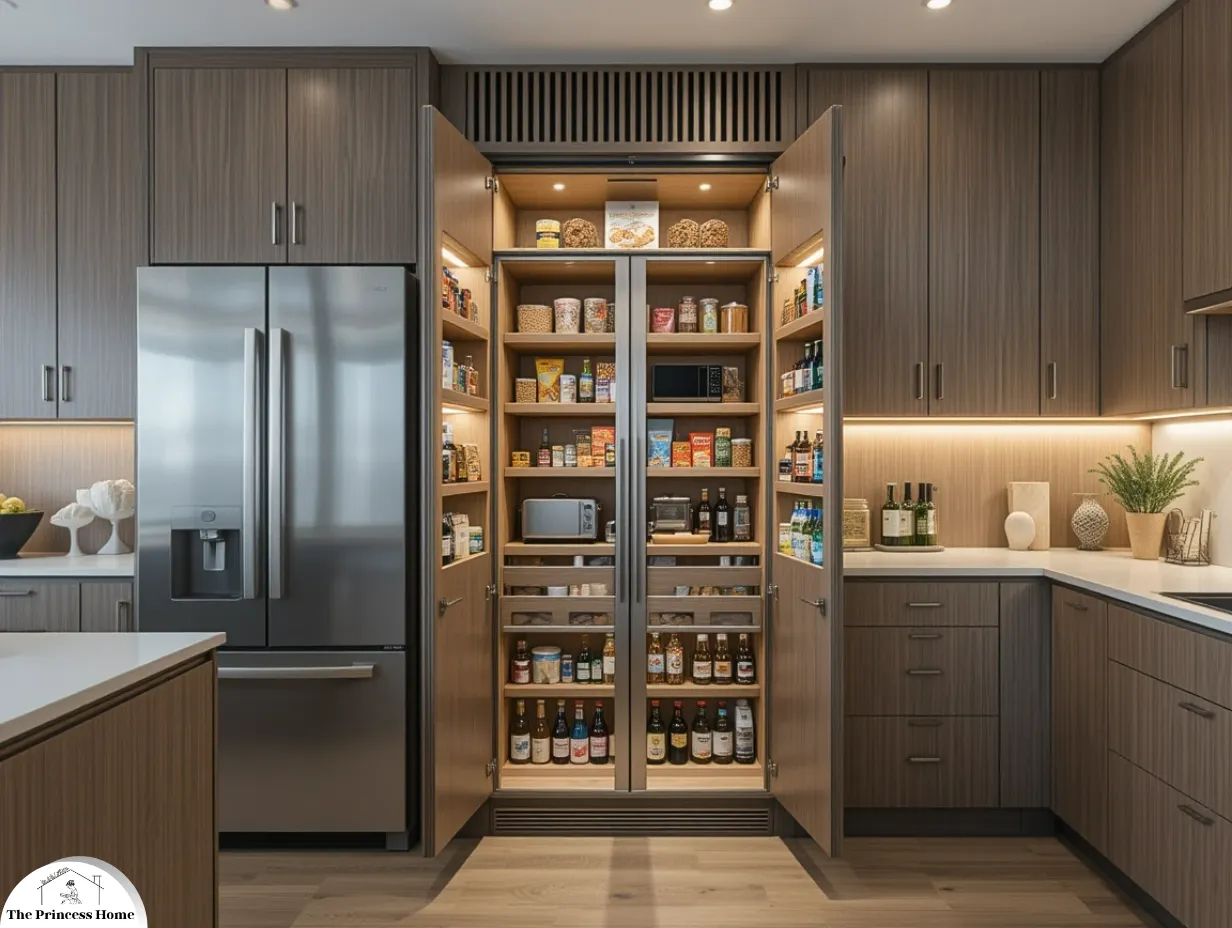
6. Prioritize Smart Storage
Maximize every inch of your kitchen with smart storage ideas like pull-out shelves, deep drawers, lazy Susans, and corner solutions. Use vertical dividers for trays and baking sheets, drawer organizers for utensils, and toe-kick drawers for extra space. Hang pots and tools on wall racks or add open shelving for easy access. A well-planned pantry with pull-outs and labeled bins keeps dry goods organized. Smart storage keeps your kitchen clutter-free, efficient, and functional for years.
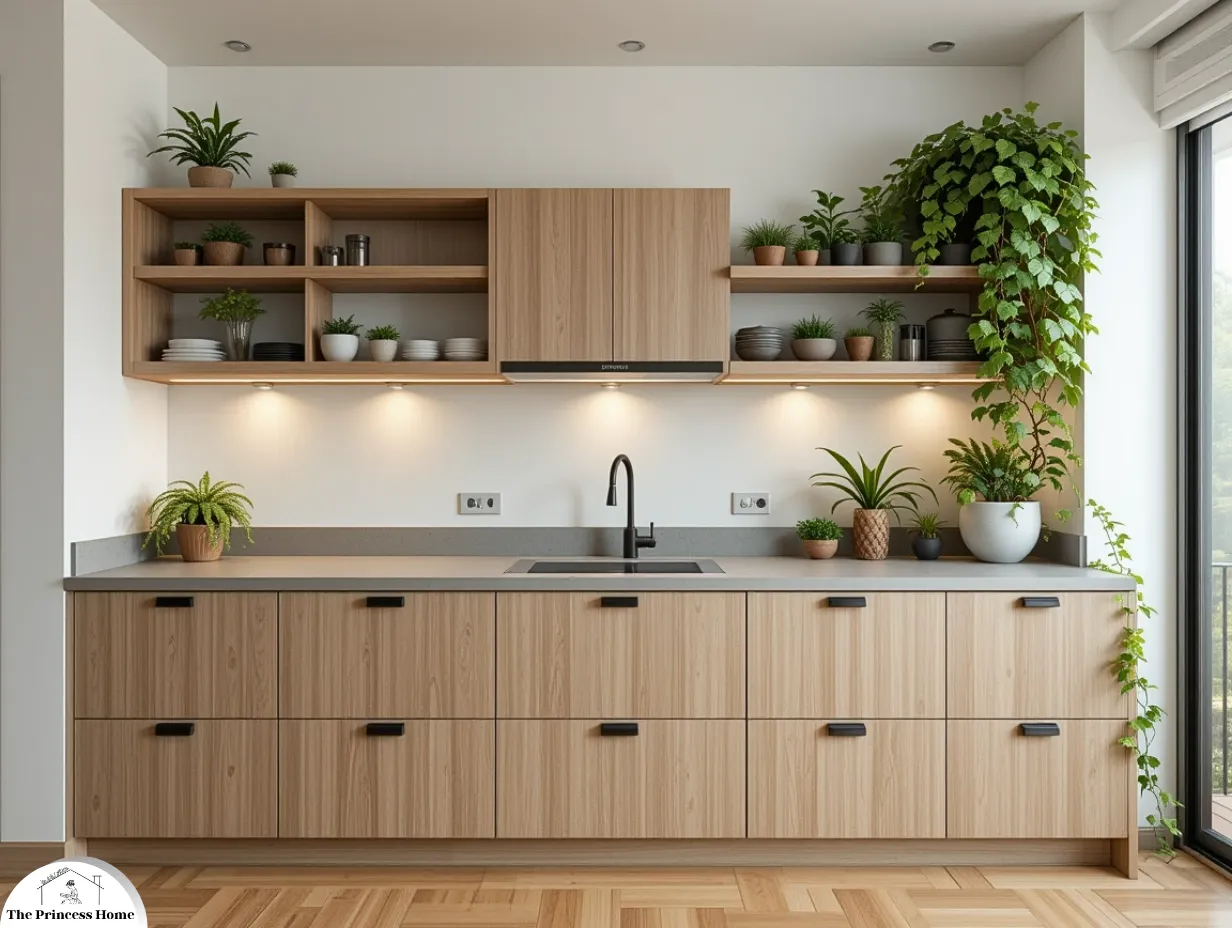
7. Use Open Shelving Strategically
Open shelves make a kitchen feel airy and display your favorite dishes or glassware. Keep it balanced by limiting open shelving to one or two sections and pairing it with closed cabinets to avoid clutter. Place shelves near prep areas or sinks for easy access and style them with matching items for a clean, cohesive look. Open shelving adds character but needs regular upkeep to stay neat.
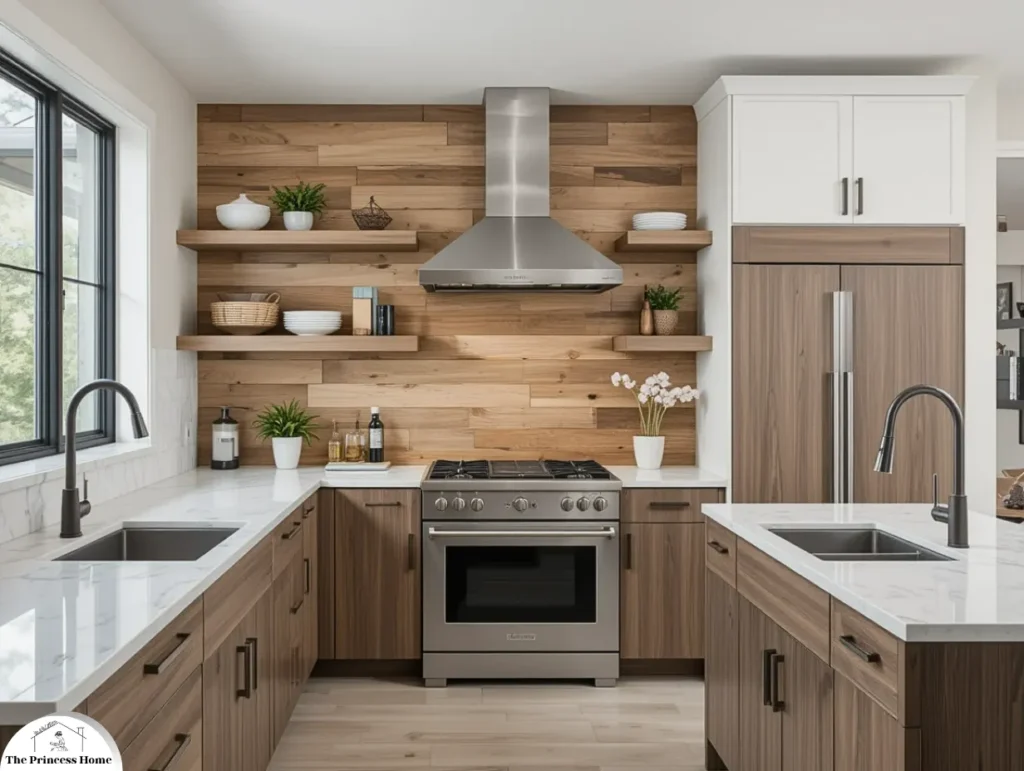
8. Mix Materials for Texture
Combine different materials like wood, metal, glass, and stone to add depth and warmth to your kitchen. Pair marble or quartz countertops with rustic wood shelves, or use matte black hardware with glossy tiles for contrast. Balance warm and cool tones and layer textures with details like woven baskets or glass cabinet doors. Mixing materials keeps your kitchen design stylish, unique, and inviting.
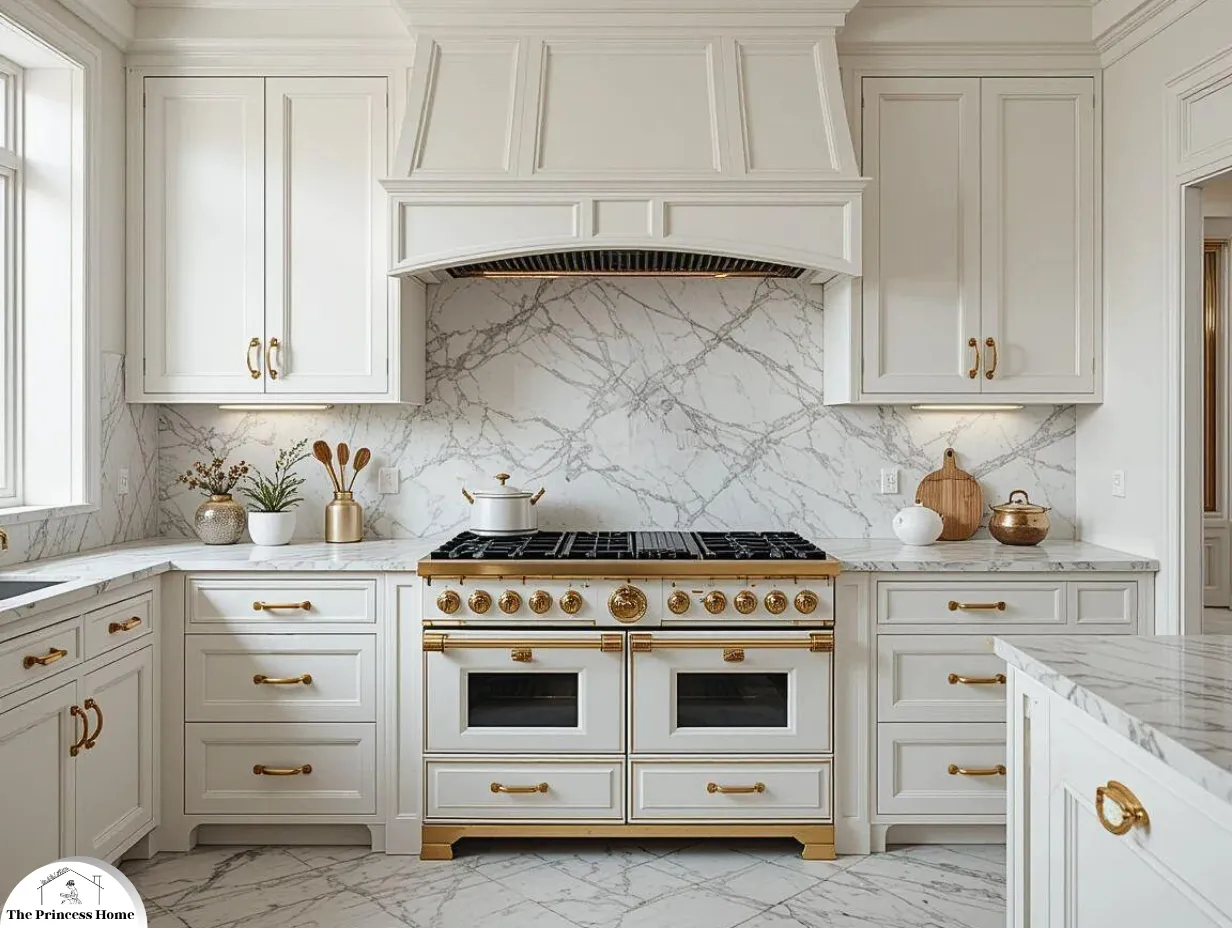
9. Upgrade Cabinet Hardware
Replacing knobs and pulls is an easy, affordable way to refresh your kitchen. Choose hardware that matches your style — chrome or stainless steel for modern, brushed brass for transitional, or oil-rubbed bronze for farmhouse charm. Mix knobs and pulls for a balanced look, coordinate finishes with faucets and fixtures, and pick quality pieces that feel comfortable and durable. New cabinet hardware instantly modernizes your kitchen without a full remodel.
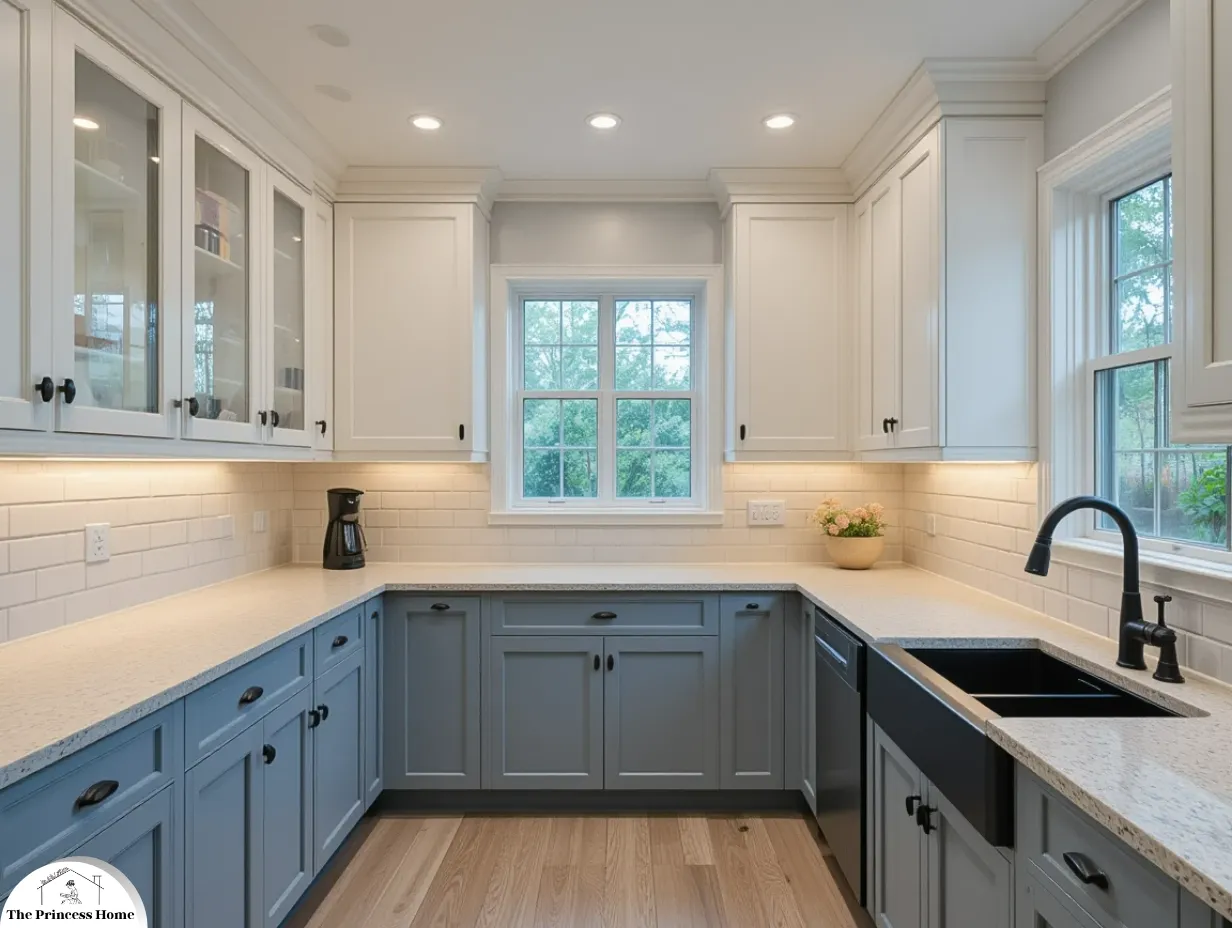
10. Install Under-Cabinet Lighting
Under-cabinet lighting brightens countertops for safer food prep and adds warm ambiance to your kitchen. Use energy-efficient LED strips or puck lights to highlight your backsplash and work areas. Choose plug-in or hardwired options with dimmers for flexible, stylish, and practical lighting that enhances both function and design.
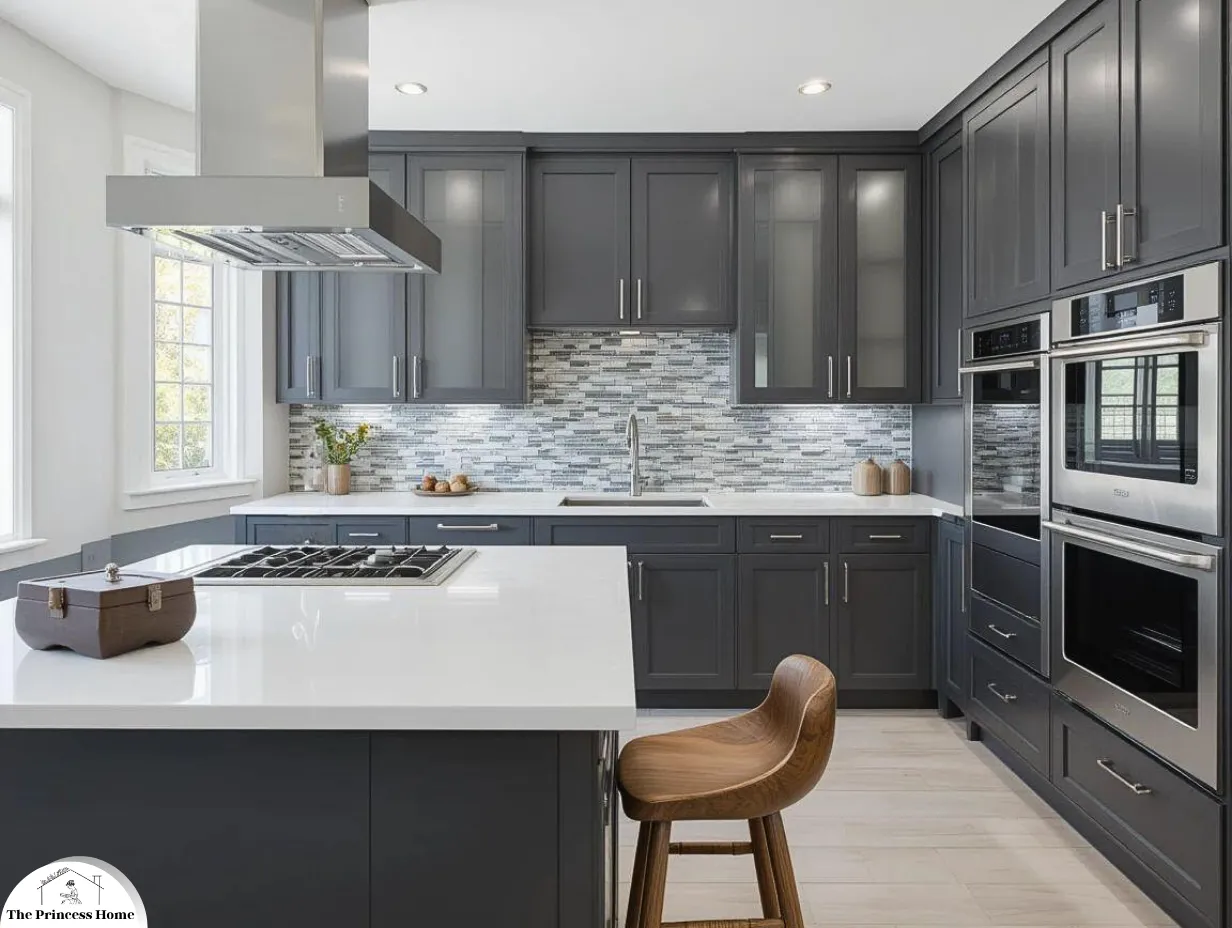
11. Choose Durable Countertops
Pick countertops that match your lifestyle and kitchen style. Quartz is modern, durable, and low maintenance. Granite is timeless, strong, and adds natural beauty. Butcher block adds warmth and fits rustic or farmhouse kitchens but needs regular care. Choosing durable countertops ensures your kitchen stays functional and stylish for years.
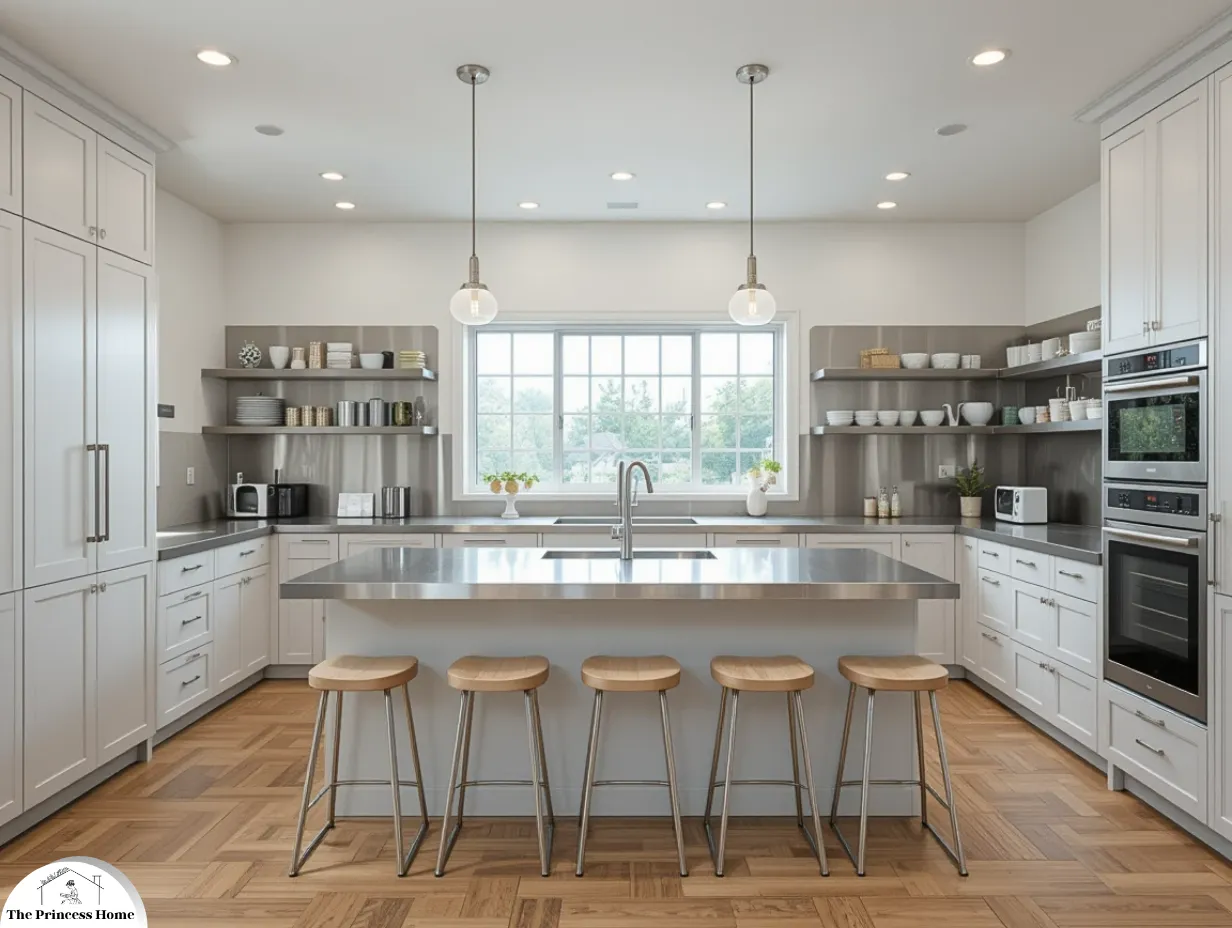
12. Don’t Forget the Flooring
Pick kitchen flooring that can handle spills and heavy traffic while matching your style and maintenance needs. Ceramic tile is durable and easy to clean, natural stone adds timeless beauty but may need sealing, luxury vinyl is water-resistant and budget-friendly, and hardwood offers warmth and classic appeal with proper care. Choosing the right kitchen floor keeps your space practical, stylish, and long-lasting.

13. Create a Focal Point
Every kitchen needs a standout feature to draw the eye and define the space. Choose a bold backsplash, statement light fixture, colorful range hood, or an eye-catching island to create a strong visual focal point. One well-chosen focal element adds personality and ties your kitchen design together without feeling cluttered.
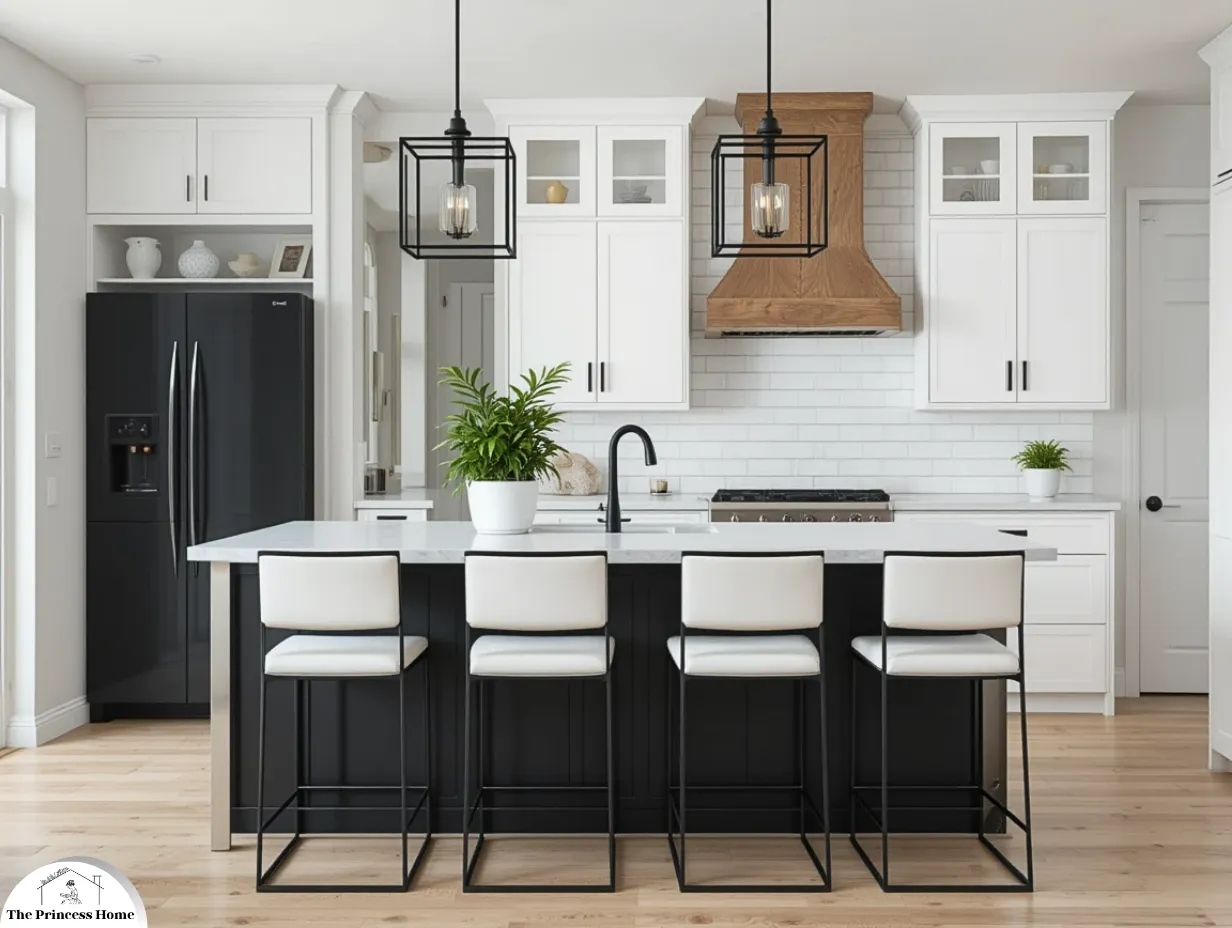
14. Include Plenty of Seating
Comfortable seating makes your kitchen welcoming and functional for family and guests. Add bar stools at the island or create a cozy breakfast nook for casual meals and conversation. Choose seating that fits your kitchen’s style and provides enough spots for entertaining, encouraging everyone to gather and linger in the heart of your home.
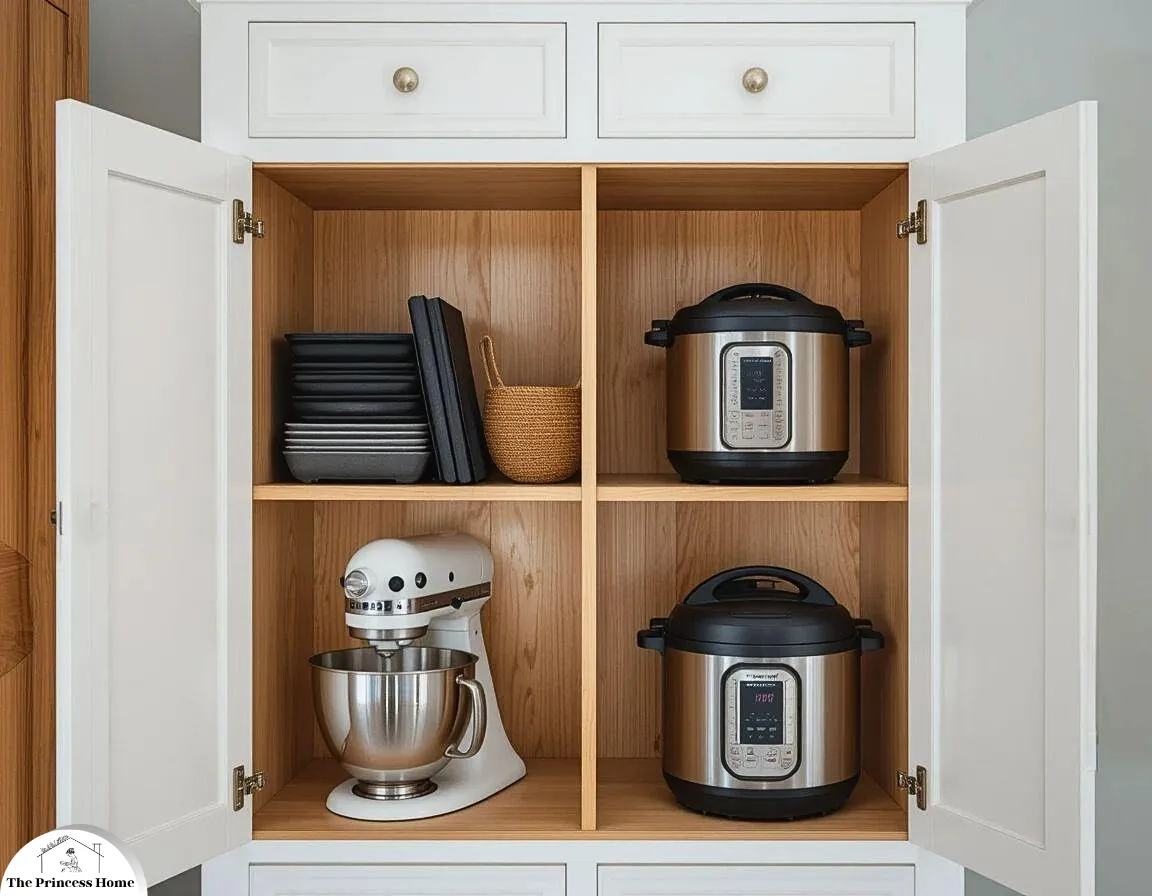
15. Hide Small Appliances
Keep your kitchen counters clean and open by storing small appliances out of sight. Use appliance garages, pull-out shelves, lift-up cabinets, or pantry space to tuck away toasters, coffee makers, and mixers when not in use. Hiding small appliances makes your kitchen look tidy, organized, and more functional.
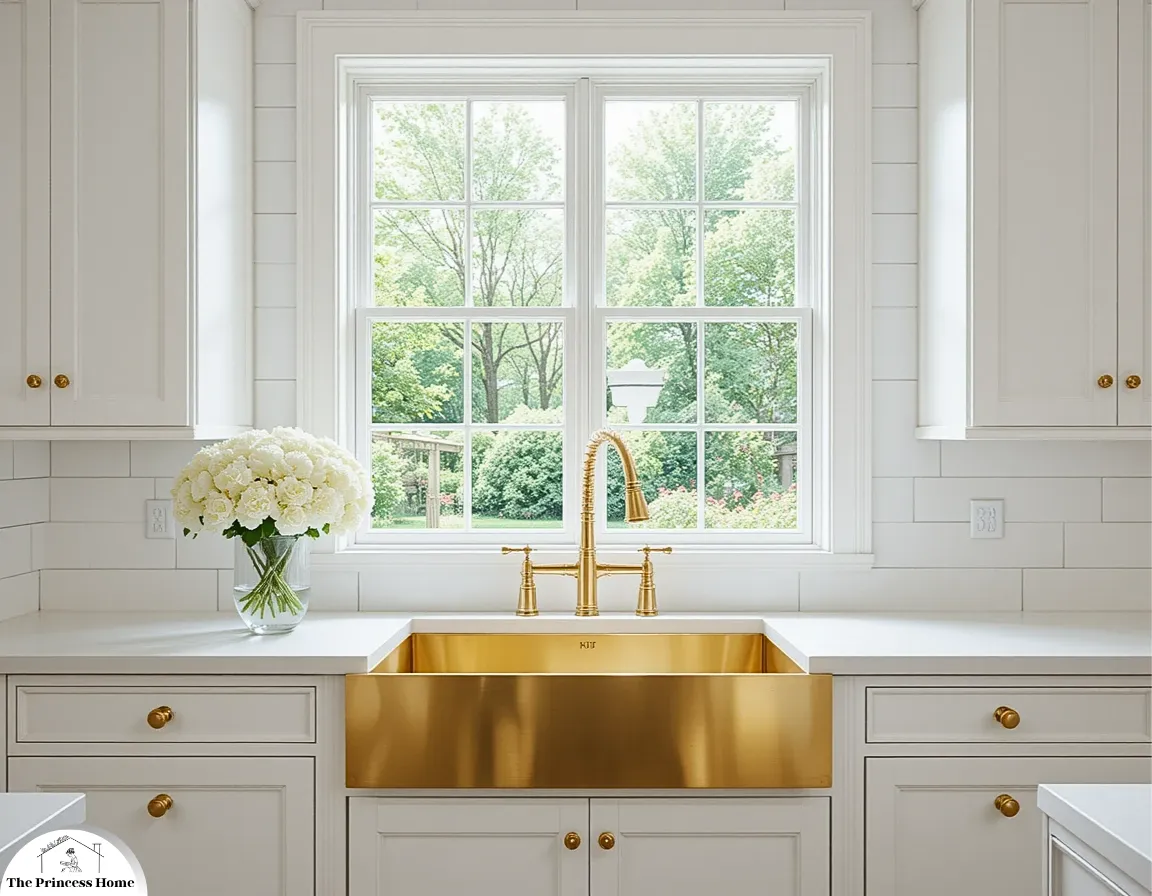
16. Upgrade Your Fixtures
A stylish faucet instantly refreshes your sink area and adds functionality. Choose a high-arc, pull-down sprayer and match the finish with your cabinet hardware for a cohesive look. Quality, modern fixtures improve daily use and tie your kitchen design together beautifully.
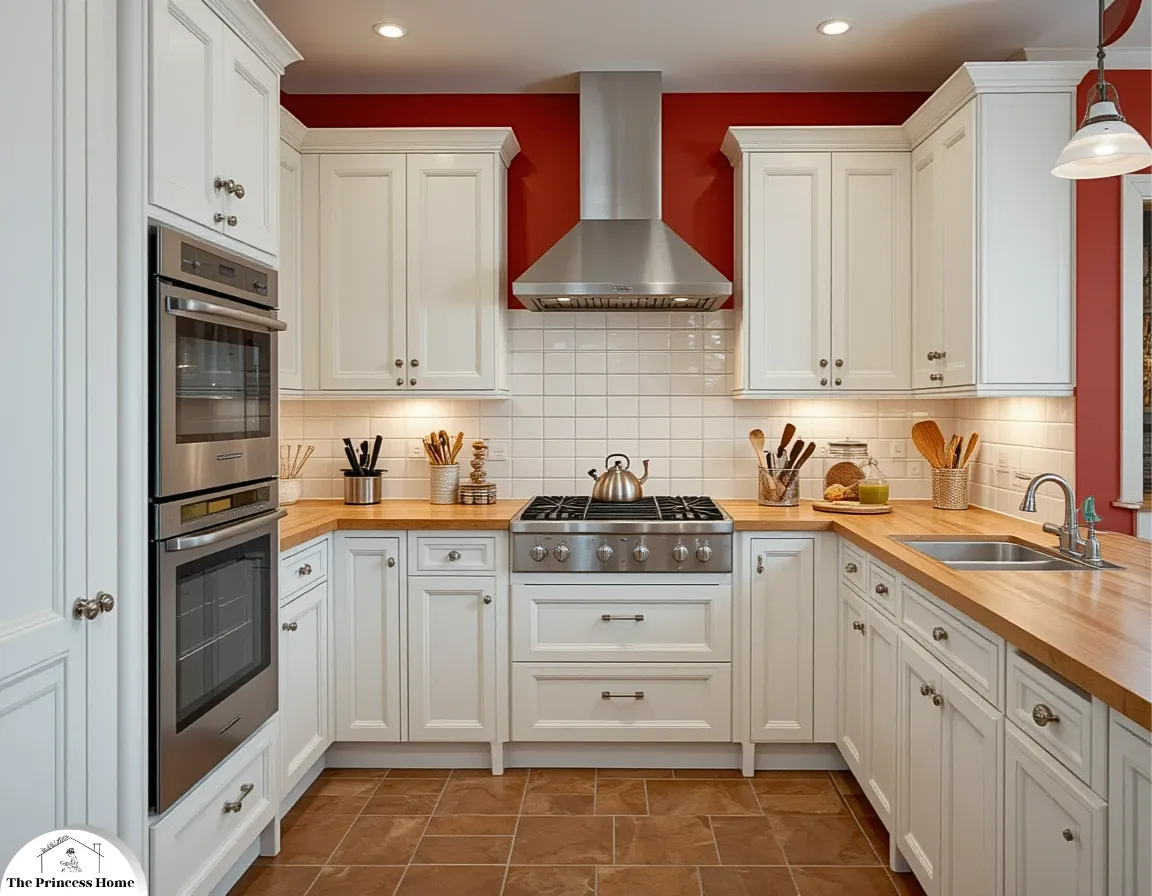
17. Layer Your Lighting
Combine ambient lighting like ceiling lights, task lighting such as pendants or under-cabinet lights, and accent lighting to create a warm, functional kitchen. Use dimmer switches for more control and flexibility to adjust brightness for cooking or setting the mood.
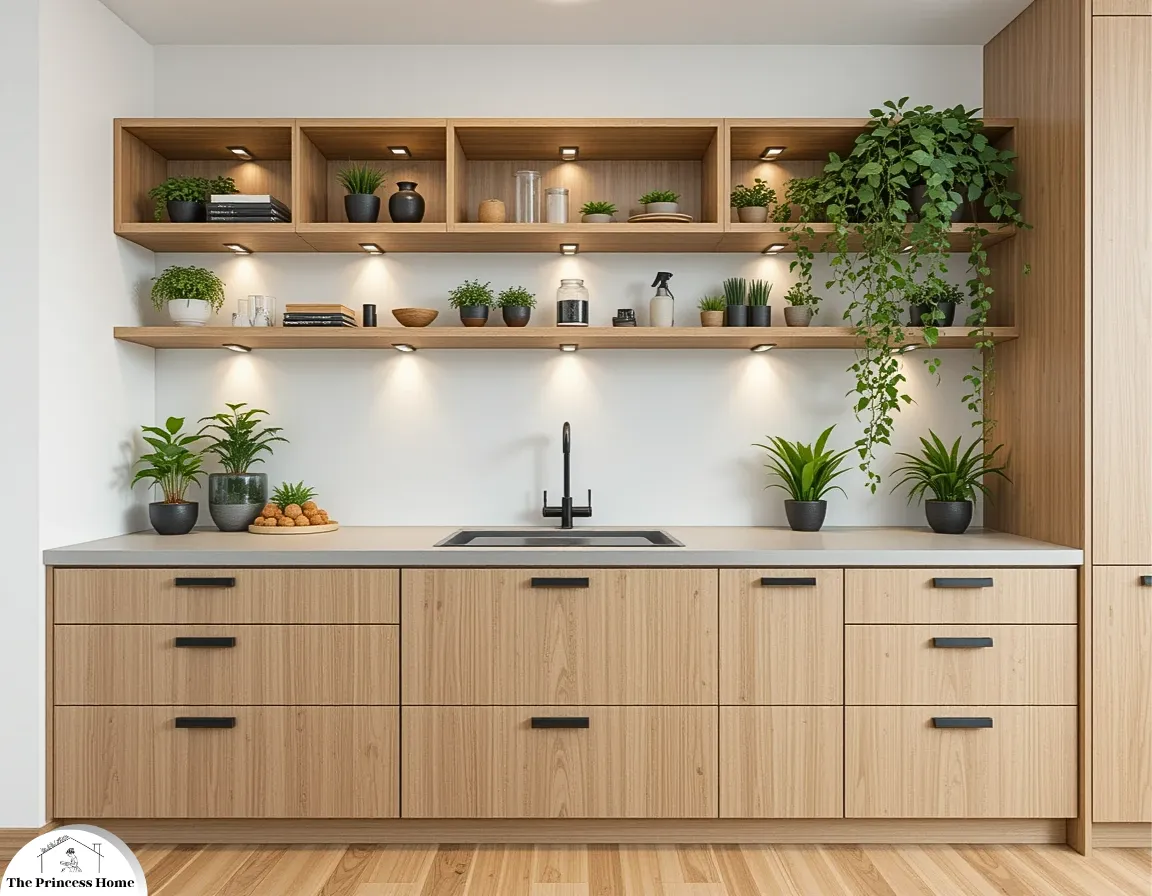
18. Add a Pop of Greenery
“Style your shelves and countertops with potted plants of different sizes and shapes to add vibrant greenery and organic life to your kitchen. A few potted herbs, a vase of fresh flowers, or a small windowsill herb garden bring color, charm, and everyday practicality.”
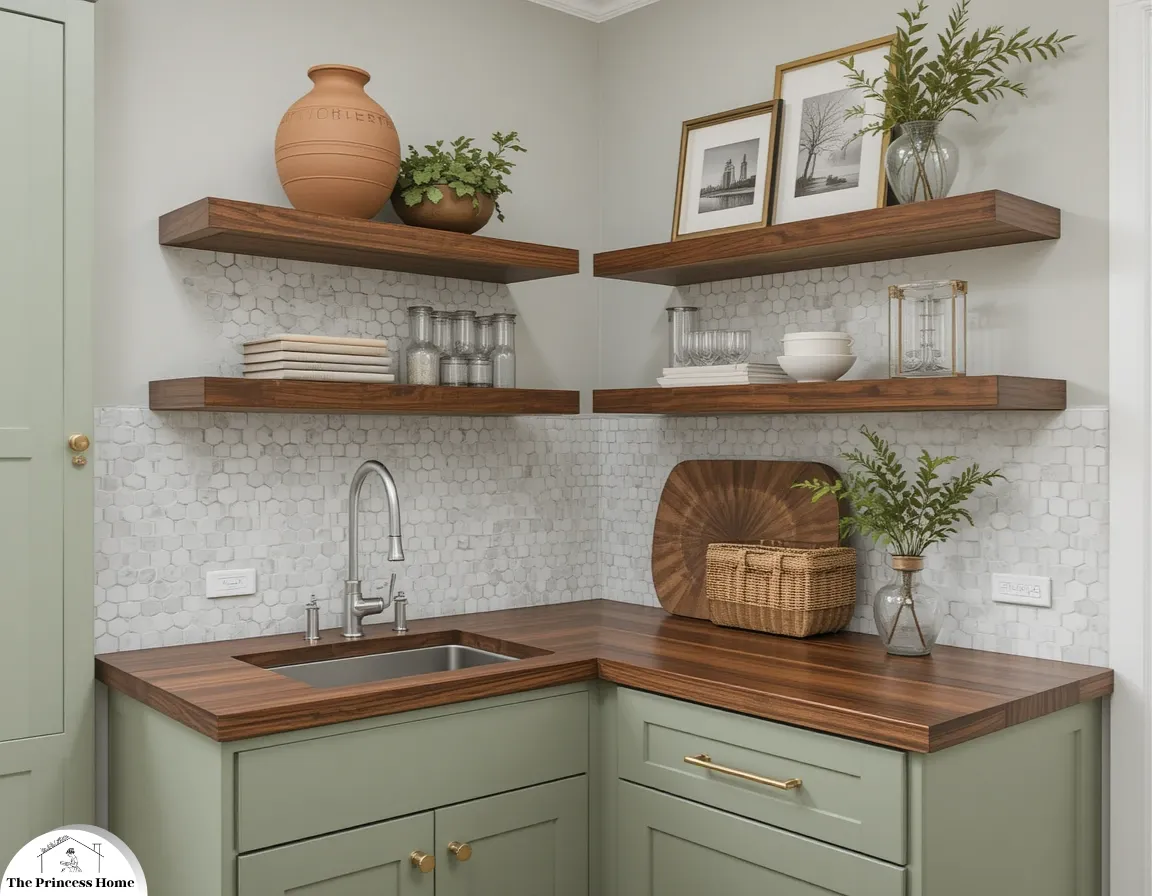
19. Personalize with Decor
“Open kitchen shelves or countertops are perfect for adding personal touches like cookbooks, art prints, or decorative bowls. Keep it simple and cohesive — avoid overcrowding for a clean, stylish look.”
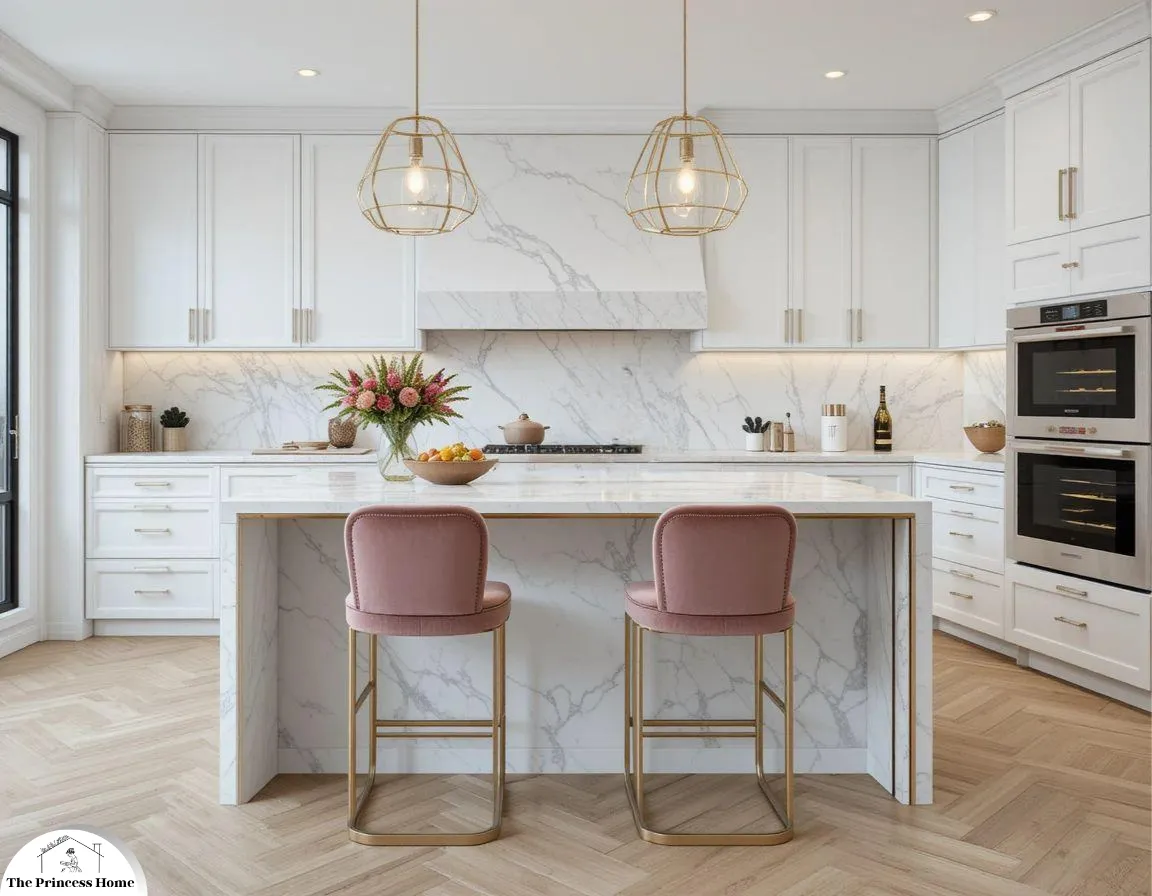
20. Stay Flexible with Trends
Love bold kitchen trends but want to avoid costly remodels? Use trendy colors and patterns in ways that are easy to update. Add personality with bar stool cushions, vibrant wall art, colorful dishware, rugs, or small appliances. Try peel-and-stick backsplash tiles or statement light fixtures for a quick refresh. This simple approach keeps your kitchen design modern, stylish, and flexible — so you can easily swap out decor as trends change without the expense of a full renovation.
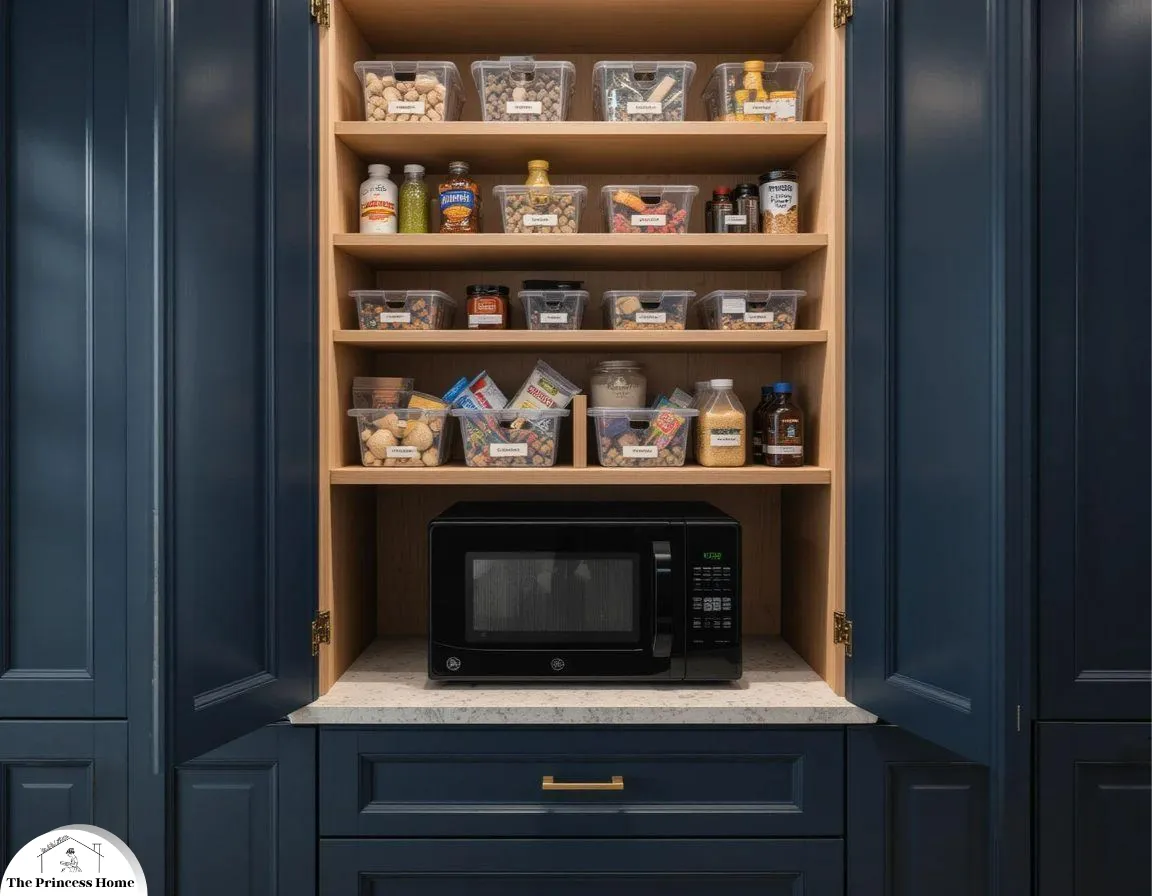
21. Keep It Clutter-Free
No matter your kitchen style, an organized kitchen always feels better and functions more efficiently. Declutter regularly, use baskets or bins inside cabinets, and invest in smart storage solutions like pull-out shelves or drawer organizers to keep everything in its place. A tidy kitchen design makes cooking easier and keeps your space looking clean and inviting.
Final Thoughts
No matter your budget, layout, or favorite style, these simple kitchen design tips can help you create a space you’ll love for years to come. Start with good bones — functional layout, quality finishes — then add personality through colors, textures, and personal touches. Whether you’re renovating from scratch or refreshing what you have, a beautiful, functional kitchen is always within reach.
Here are some frequently asked questions related to the article :
Q1: What is the most important factor to consider when designing a simple kitchen?
A1: The layout and spatial arrangement are crucial. Consider the work triangle, which connects the stove, sink, and refrigerator, ensuring efficient movement during cooking. Also, think about the placement of functional zones like the cooking, cleaning, and storage areas.
Q2: How do I choose the right kitchen layout for my space?
A2: The choice of layout depends on your kitchen’s size and shape. For narrow spaces, a galley layout is suitable. An L-shaped layout is efficient for smaller kitchens, while a U-shaped layout offers ample workspace. If space allows, an island layout with a central island can enhance both functionality and aesthetics.
Q3: What are some effective storage solutions for a simple kitchen?
A3: Cabinets and drawers are essential for storage. Deep drawers are great for pots and pans, while pull-out shelves maximize accessibility. A designated pantry area is also helpful for storing non-perishable items. Open shelving can be used for frequently used items or for decorative purposes.
Q4: How can I make the kitchen feel brighter and more inviting?
A4: Natural light is key. Maximize it by placing windows strategically and considering the kitchen’s orientation. Incorporate task lighting above work areas for efficient cooking and preparation. Ambient lighting, such as pendant lights or recessed lighting, can create a warm and welcoming atmosphere.
Q5: What materials are best for kitchen countertops and flooring?
A5: For countertops, choose durable and easy-to-maintain materials like granite, quartz, or laminate. When it comes to flooring, opt for water-resistant options such as tiles, vinyl, or hardwood, depending on your preferences and the overall style of the kitchen.
Q6: How can I balance aesthetics with functionality in a simple kitchen design?
A6: Striking a balance between aesthetics and functionality is key. Choose materials, colors, and finishes that align with your design vision while ensuring that they are practical and easy to maintain. Keep clutter to a minimum and prioritize the efficiency of the kitchen’s layout and storage solutions.
Q7: Is there a specific distance that should be maintained between the key elements of the work triangle?
A7: Generally, a distance of 4 to 9 feet between the stove, sink, and refrigerator is recommended for an efficient work triangle. This range allows for smooth movement during cooking tasks while minimizing unnecessary steps.
Q8: Can I incorporate an island in a small kitchen?
A8: Yes, you can incorporate an island in a small kitchen, but it’s important to ensure that it doesn’t impede the flow of movement. Choose a compact island design that provides additional workspace, storage, and possibly a seating area, while still leaving enough room for comfortable movement around it.
Q9: What’s the benefit of open shelving in a kitchen?
A9: Open shelving adds a touch of openness and style to a kitchen. It allows you to display frequently used items like dishes, glasses, and spices, making them easily accessible. However, it’s important to strike a balance and avoid clutter, as open shelves require consistent organization.
Q10: How can I create a cohesive look in my kitchen design?
A10: To achieve a cohesive look, choose a consistent color palette, materials, and finishes that complement each other. Ensure that the design elements flow smoothly from one area to another. Pay attention to details like cabinet hardware, backsplash tiles, and lighting fixtures to tie the design together.


